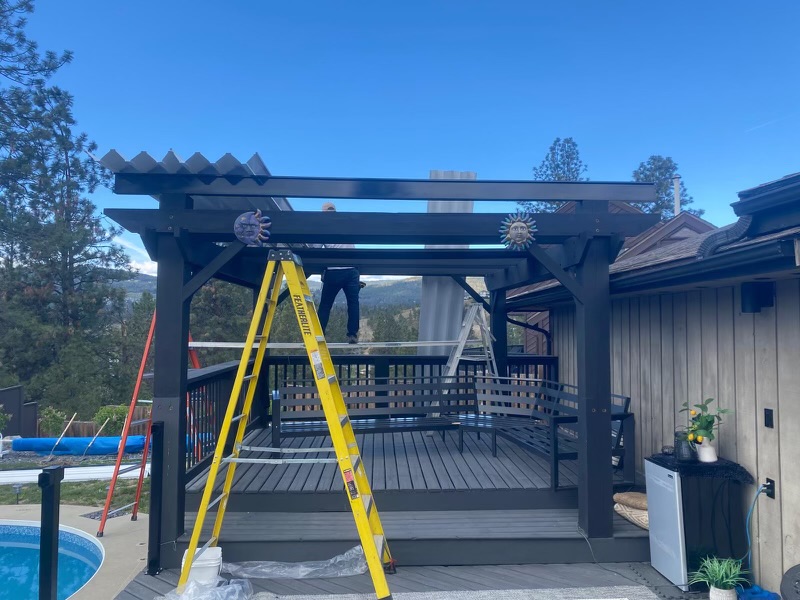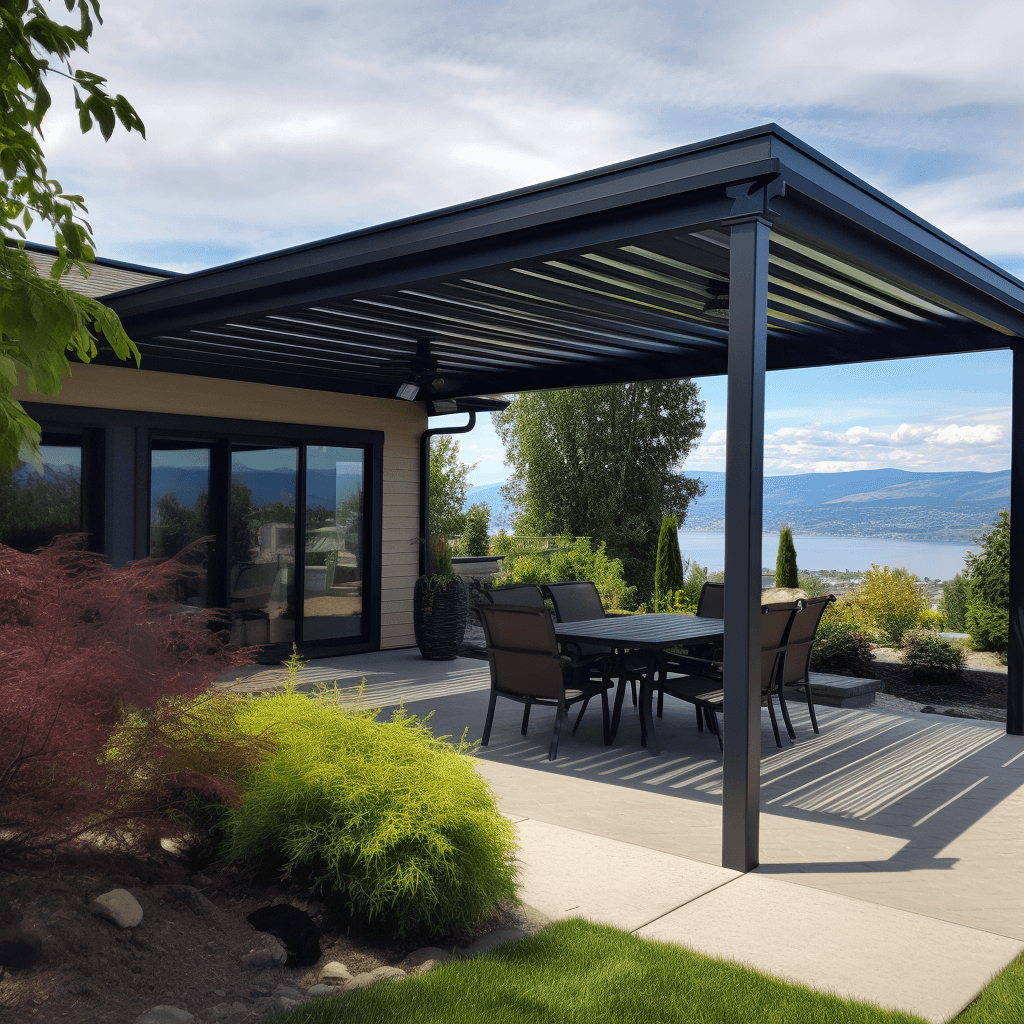How to Measure for Your Perfect Patio Cover in 2025
Planning to build your own patio cover? That’s awesome! A well-designed patio cover not only makes your outdoor space look great but also lets you enjoy it no matter the weather. Whether you’re in Penticton, Salmon Arm, or anywhere else in the Okanagan, getting accurate measurements is super important. This guide from Okanagan Patio Covers (OkanaganPatioCovers.ca) will walk you through what to measure to make sure your DIY patio cover fits perfectly and looks amazing.

Summary
Before you start building, you’ll need to measure a few key things: the width and length of the area, the height from the ground to your roof’s edge (eaves), how far your roof sticks out (eaves overhang), and any obstacles in the way. Also, think about how water will drain and what kind of slope you need. Getting these measurements right is essential for a patio cover that fits well and works great. Here’s a quick rundown:
- Width & Length: Tells you how big the cover needs to be.
- Height to Eaves: Makes sure the cover lines up with your house.
- Eaves Overhang: Helps you figure out where to attach the cover.
- Obstructions: Ensures the cover doesn’t block anything.
- Drainage & Slope: Keeps water from pooling on the cover.
- Material Thickness: Helps you choose the right supports.
- Perimeter for Extras: Gives you space for gutters or lights.
Area Width and Length
First up, measure the width and length of the area where you plan to put the patio cover. This tells you how big the cover needs to be. Be as accurate as possible, as this will determine how much material you’ll need and the overall size of the project. Whether you’re building aluminum patio covers in Kelowna or creating a cozy spot in Lake Country, getting this right is key.
- How to Measure: Use a measuring tape and stretch it across the entire area you want to cover. Write down the measurements in both feet and inches to be extra precise.
- Pro Tip: Measure a few times to make sure you get the same numbers each time.
Height from Ground to Eaves
If you’re attaching the patio cover to your house, measure the height from the ground to the edge of your roof (eaves). This is super important to make sure your patio cover lines up nicely with your house and has enough space underneath.
- Why It Matters: This height tells you how much vertical space you have to work with, which affects the design and how useful the cover is.
- Expert Advice: Use a laser measuring tool for better accuracy, especially for taller houses.
Eaves Overhang
Understanding how far your roof sticks out (eaves overhang) is vital, especially if you’re attaching the patio cover to your house. Measure how far your eaves extend from the walls. This will help you figure out where to attach the patio cover.
- How to Measure: Use a level to make a straight line down from the edge of the eave and measure from the wall to that point.
- Important Note: This measurement will help you choose the right brackets and supports.
Obstructions and Clearance
Check for anything that might get in the way, like windows, doors, or power lines. Make sure your patio cover design works around these things without causing problems. Also, think about how much space you need for things like barbecues, furniture, or just walking around.
- Examples of Obstructions:
- Windows and doors
- Outdoor lights
- Air conditioning units
- Gas meters
- Clearance Considerations:
- Headroom for walking
- Space for furniture
- Room for barbecues
Drainage and Slope
Think about the slope of your roof (if you’re attaching the cover to your house) and how water flows in your yard. Your patio cover shouldn’t mess with the existing drainage or cause water to build up on the cover.
- Drainage Solutions:
- Make sure the cover has a slight slope so water can run off.
- Think about adding gutters to guide water away from your house.
- Why It’s Crucial: Good drainage prevents water damage and helps your patio cover last longer.
Material Thickness and Support
Even though you’re not measuring space directly, understanding how heavy and thick the materials you’re using are is important. This will affect what kind of supports you need to hold your patio cover safely.
- Material Considerations:
- Aluminum is light and doesn’t need as much support.
- Wood is heavier and needs stronger supports.
- Polycarbonate panels are light but might need extra framing.
- Support Structure:
- Think about how far apart the support posts will be.
- Make sure the bases are strong enough to handle the weight.
Perimeter for Gutters or Extras
If you’re planning to add gutters, lights, or anything else to your patio cover, measure around the edges where these things will go. This makes sure you have enough space and the right setup for these extras.
- Gutter Planning:
- Measure the length of the roof edge where the gutters will attach.
- Think about how big the gutters need to be and how many downspouts you’ll need.
- Lighting and Extras:
- Plan where you want to put lights and outlets.
- Make sure there’s enough space for any extra features.
Conclusion
Getting accurate measurements is the most important part of building a DIY patio cover. By carefully thinking about each of these things, you’ll be well on your way to creating a beautiful and useful outdoor space that complements your home. Remember, a little planning can make your DIY project a huge success!
For more info or help, contact us and check out our DIY Aluminum Patio Cover Services. The team at Okanagan Patio Covers (OkanaganPatioCovers.ca) is always here to help you create the perfect outdoor space.


